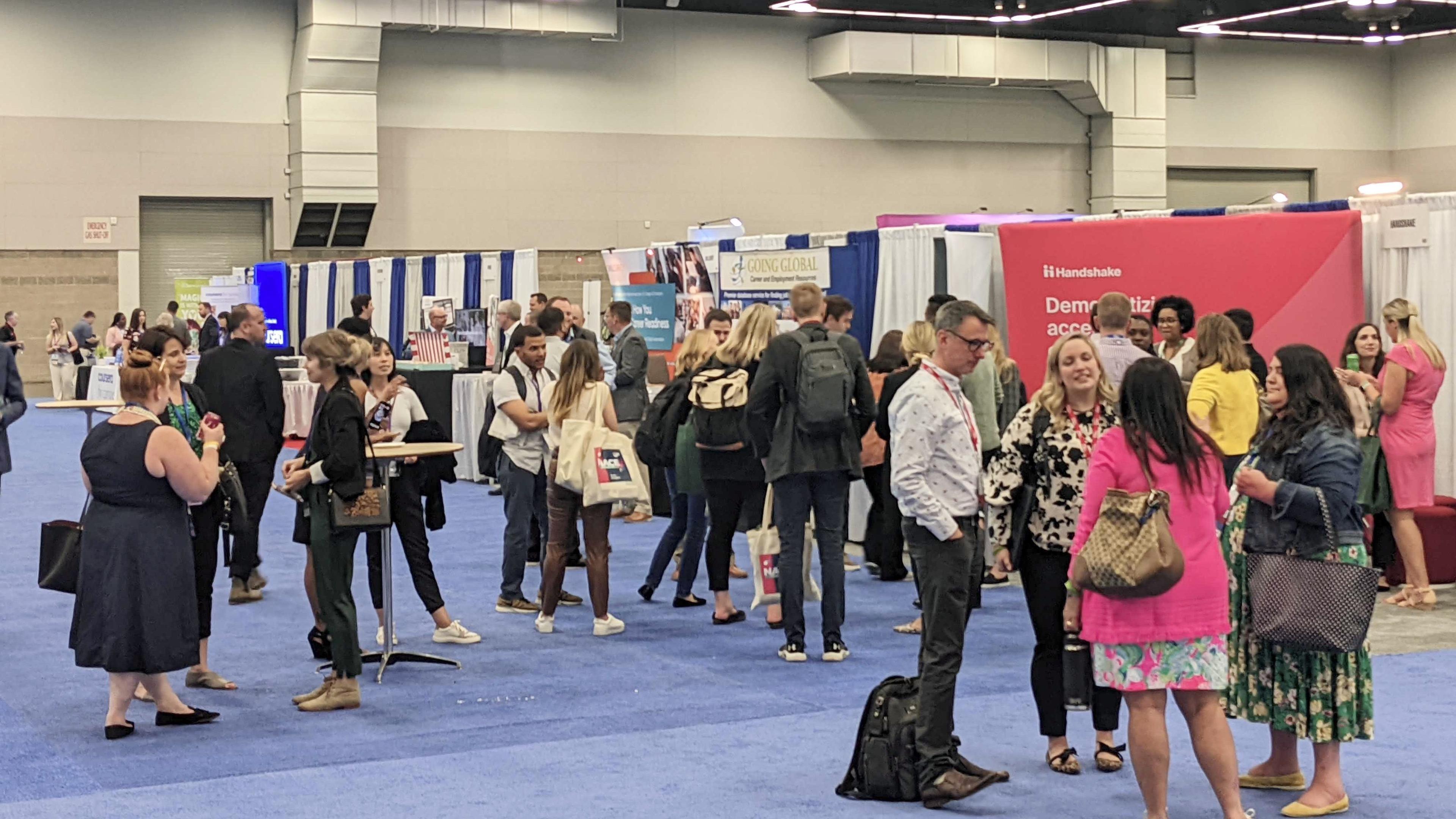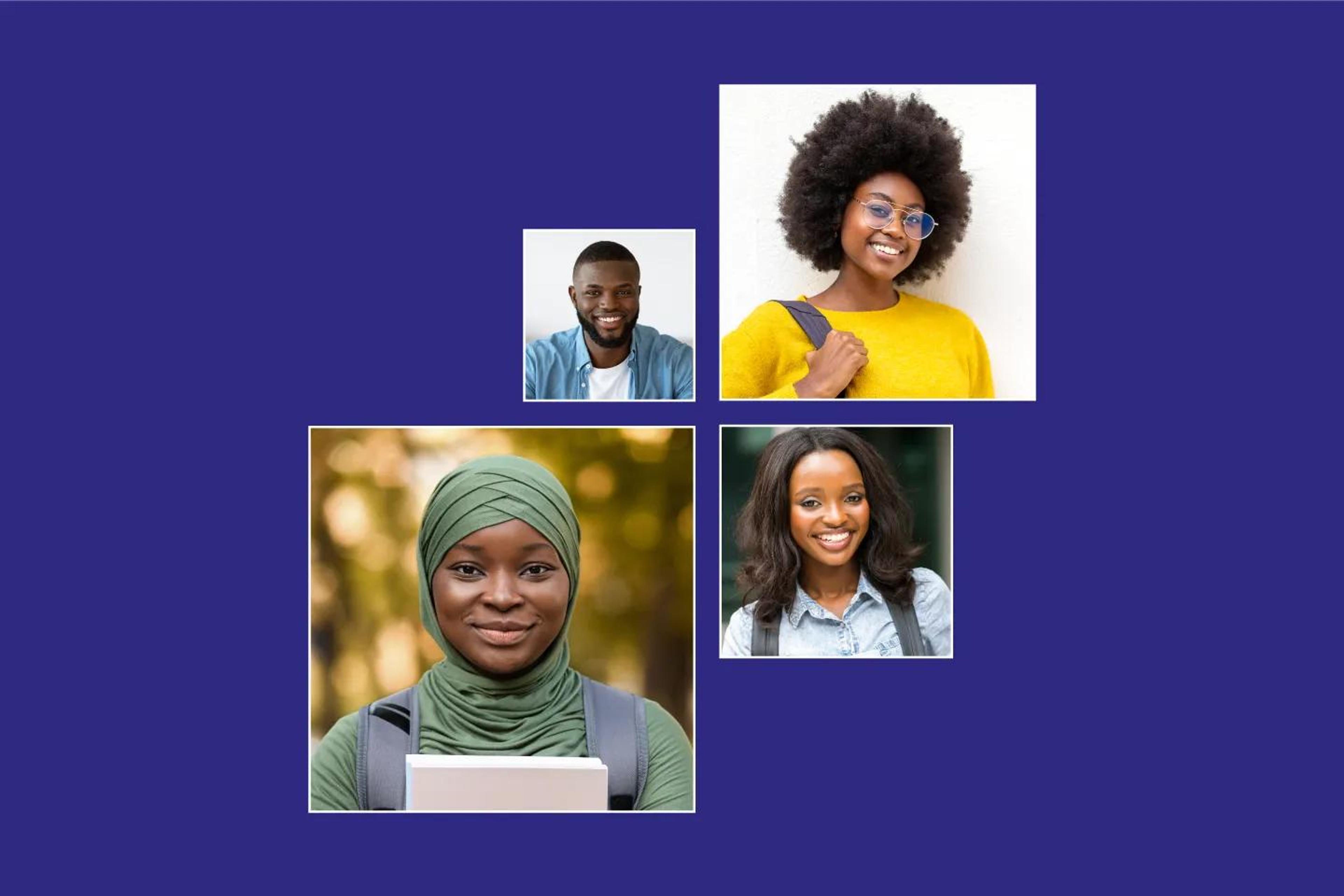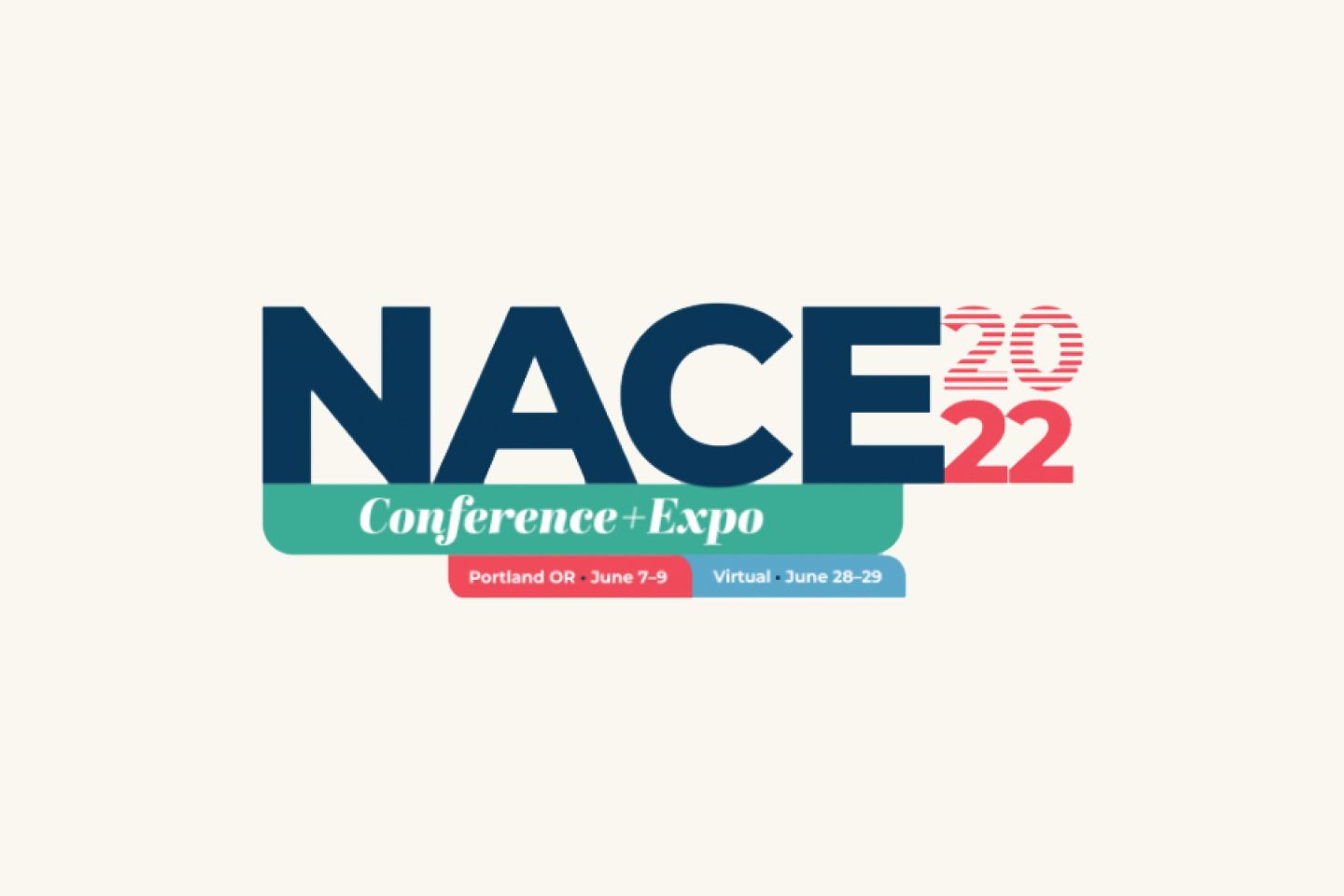Did you make it to NACE 2022?
We did, and we’re feeling refreshed and energized after being back in person for the first time in two years. From inspiring conference sessions, to talking about today’s big early career challenges with attendees on the show floor, to seeing teams reunite and celebrate getting together at our NACE After Hours after-party, we left NACE excited about 2022 fall recruitment and beyond.

In case you missed it, here are our top NACE highlights.
Exploring the great city of Portland
After two years of exclusively virtual events, what better place to get back together than the bucket-list-worthy city of Portland? PDX didn’t disappoint, especially for those of us who were first-time visitors.
NACE After Hours
Party-goers enjoyed the best food and drinks Portland has to offer at our after-party, NACE After Hours. We loved watching teams reconnect and bond over the photo booth and career-themed cocktails—Fall Fair Fizz, anyone?—while the live DJ spun vinyls. We hosted NACE After Hours with Workday and celebrated our new product integration—a major step in streamlining hiring for our employer partners. We couldn’t be more excited about this new integration and the frictionless experience it will bring!

Thought-provoking sessions and attendee conversations
NACE offered a packed agenda of thought leaders sharing insightful perspectives for expanding the impact of our collective work serving and engaging students and early career professionals. Attendees continued the conversation on the show floor—and after hours. Here’s a snapshot of what we heard:
Skills, skills, skills
Many sessions and conversations focused on the importance of incorporating a skills-based approach when hiring. For employers, this approach begins with companies understanding which skills are most important for advancing early careers. Then, employers can explore how they can help young talent develop those skills. On the higher ed side, many schools have started developing career readiness courses that come with a certification.
A focus on skills aligns with the priorities of students entering the workforce. NACE survey data (n=9K students) shows that students ranked their top job priorities in the following order:
- Job security (this may be due to recent economic news)
- The opportunity to develop job-specific skills
- The opportunity to develop applied skills
The move to a skills-based focus is clearly a priority for students, educators, and employers alike, but change is needed to make it a reality. On Day 2 of NACE, we heard from Dr. Michelle R. Weise, Vice Chancellor of Strategy and Innovation at the National University System and author of Long Life Learning: Preparing for Jobs that Don’t Even Exist Yet. Dr. Weise shared that, on the whole, companies offer a mere fraction of the training hours that were offered 40 years ago—on average 11 per year, compared to 100 in 1979.
This was troubling to hear, considering more than eight in 10 middle-skill jobs require digital skills, but one in three American workers have very limited or no digital skills. We heard a related conversation at our recent annual conference, Handshake Access, between Jesse Haines, Director at Grow with Google, and Eloy Oakley, Chancellor of California Community Colleges.
Hybrid recruiting is here to stay
Heading into fall recruiting season, attendees were thinking about the best way to reach students this year. In-person recruiting is back on the table, but it’s no longer the default. Both employers and career services professionals are trying to understand the most effective recruiting formats and their implications for different student populations.
During a Day 2 session, Staying Data-Driven and Candidate-Centric: Designing a University Recruiting Strategy Post-COVID-19, Donna Hay-Jones, VP of Market Impact at Veris Insights, and Kelley Clark, Executive Director, Firmwide Diversity Campus Sourcing Lead at JPMorgan Chase & Co., polled the audience about attendees’ fall recruiting strategies. Of those polled, only three in 100 have finalized their fall recruiting strategy, but 87% are planning for a hybrid approach of some kind.
A hybrid strategy aligns with student preferences found in NACE data, which points to about half of students preferring virtual over in person. Of students polled (n=9K), 46% were satisfied with virtual career fairs and 54% expressed high satisfaction with virtual coffee chats, live streams, and tours. We’ve seen a similar response through our research—67% of Handshake Network Trends respondents (n=1,200+ students and early career professionals) believe they don’t need to meet in person to forge a meaningful professional connection—and women are 26% more likely to feel this way.

Crash course for hybrid recruiting
Learn how to build effective strategies to recruit students where they are.
Get the crash courseEmployers and higher ed: Better together
Several sessions touched on major opportunities for employers and higher ed to partner to help improve student experiences and outcomes. Employers and educators shared practical examples of strategies that have worked for them.
For example, KPMG hosted a breakout session highlighting a strategy the company implemented to help reduce the shortage of students pursuing careers in accounting. Partnering with a learning management system, KPMG created an online course for students at community colleges across the country. KPMG provided the course directly to professors, who then gave students the opportunity to complete it for extra credit. The effort has resulted in increased interest in accounting opportunities.
Employers and higher ed institutions can also work together to build stronger diversity recruiting programs and a more diverse candidate pipeline. This process requires employers to invest significant energy and time when recruiting diverse candidates—often years. For example, when talking about internship programs, Anjali Lalani, Smith Center Interns and Fellows Program Administrator at Smithsonian National Museum of African American History and Culture, shared that it took her two years to build an on-campus brand at HBCUs.

Handshake's guide to recruiting at HBCUs
Learn how to create, build, and nurture effective HBCU partnerships and drive better brand awareness at HBCUs.
Get the guideLearning from each other
Whether on the show floor, at sessions, or after hours, our hands-down favorite thing about NACE was learning from employers and higher ed professionals—and watching you learn from each other. Nothing beats peer-to-peer sharing, whether that’s online or—finally—in person.
To keep learning about what employers are doing to build best-in-class early talent programs, check out Handshake's Early Talent Awards microsite to see what's working for award-winning companies.
